Tactile Project Space
British Ceramics Biennial 2023
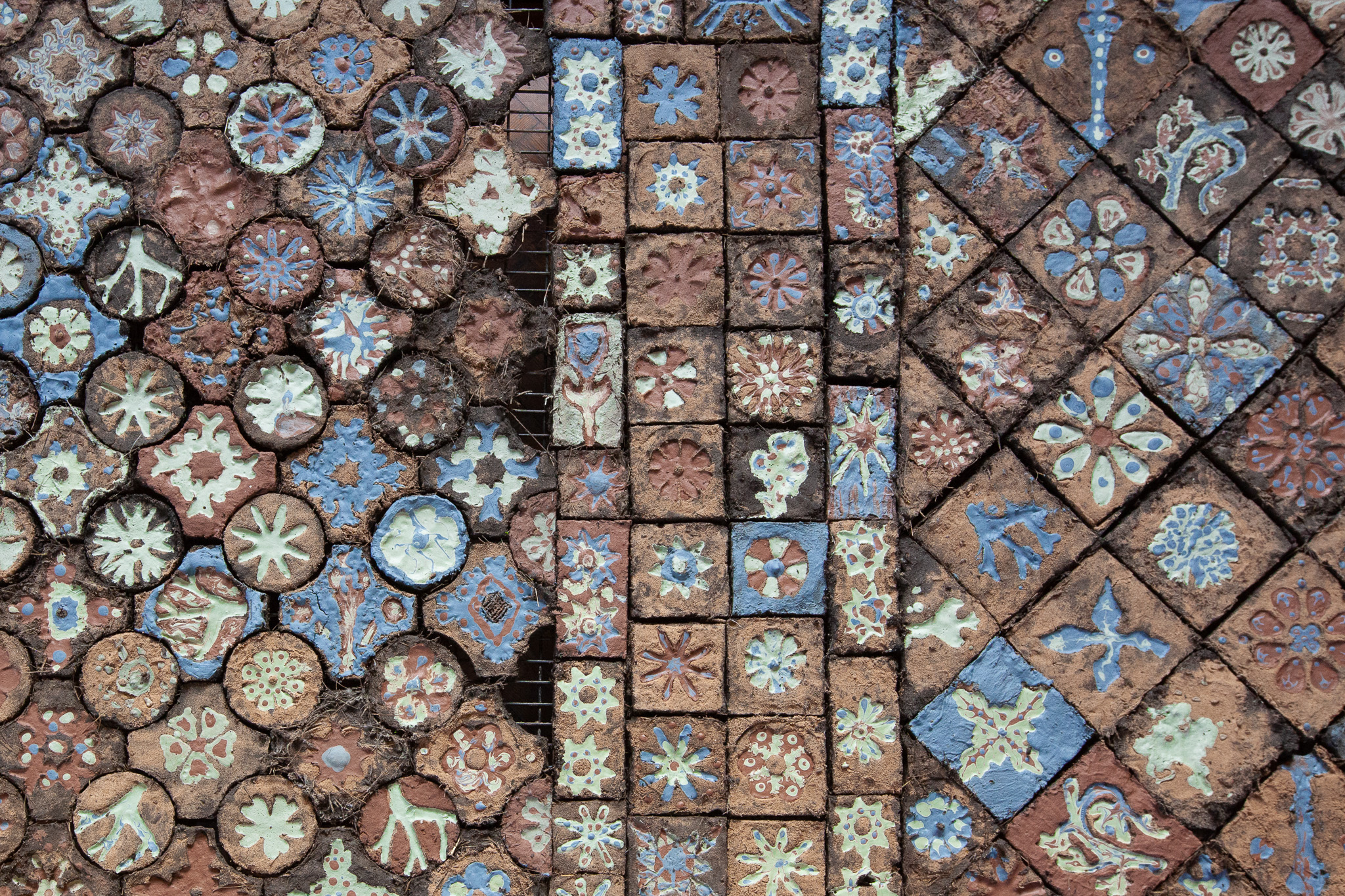
Dates:
23rd September - 05 November 2023
Location:
All Saints Church, Stoke-on-Trent
23rd September - 05 November 2023
Location:
All Saints Church, Stoke-on-Trent
Co-led with:
Sarah Fraser and Joanna Dawidowska
Supported by:
Alice Thatcher, Emma Price, Joanna Hejmiej, Claire Woolliscroft, Zeba Imam & Sue Blatherwick
Sarah Fraser and Joanna Dawidowska
Supported by:
Alice Thatcher, Emma Price, Joanna Hejmiej, Claire Woolliscroft, Zeba Imam & Sue Blatherwick
Funded by:
British Ceramics Biennial Studio & Community and Learning & Participation Programmes
with support from:
The Potteries Museum & Gallery, Staffordshire University and HS2
British Ceramics Biennial Studio & Community and Learning & Participation Programmes
with support from:
The Potteries Museum & Gallery, Staffordshire University and HS2
OVERVIEW
The Tactile Project Space was a collaborative commission for the engagement space of the 2023 British Ceramics Biennial. The project explored links between ecology and the ceramics heritage of the city as well as ideas of reusing construction and institutional waste and application of ceramics materials in growing processes. Over 2000 tiles composed of waste materials and plant seeds were made by visitors to the festival. They will be laid on the Staffordshire University campus in spring 2024 to grow into a public wildflower meadow.
THE SPACE
The project was hosted in the church hall of All Saints Church in Stoke-on-Trent, which was the main festival hub for British Ceramics Biennial 2023. The space consisted of a workshop area which hosted up to 30 people at a time and was divided into sections exploring HERITAGE, ECOLOGY, pH, MATERIALS, a LIBRARY of books relevant to the space, a dry play area and a space for visitors’ feedback.
The Tactile Project Space was a collaborative commission for the engagement space of the 2023 British Ceramics Biennial. The project explored links between ecology and the ceramics heritage of the city as well as ideas of reusing construction and institutional waste and application of ceramics materials in growing processes. Over 2000 tiles composed of waste materials and plant seeds were made by visitors to the festival. They will be laid on the Staffordshire University campus in spring 2024 to grow into a public wildflower meadow.
THE SPACE
The project was hosted in the church hall of All Saints Church in Stoke-on-Trent, which was the main festival hub for British Ceramics Biennial 2023. The space consisted of a workshop area which hosted up to 30 people at a time and was divided into sections exploring HERITAGE, ECOLOGY, pH, MATERIALS, a LIBRARY of books relevant to the space, a dry play area and a space for visitors’ feedback.

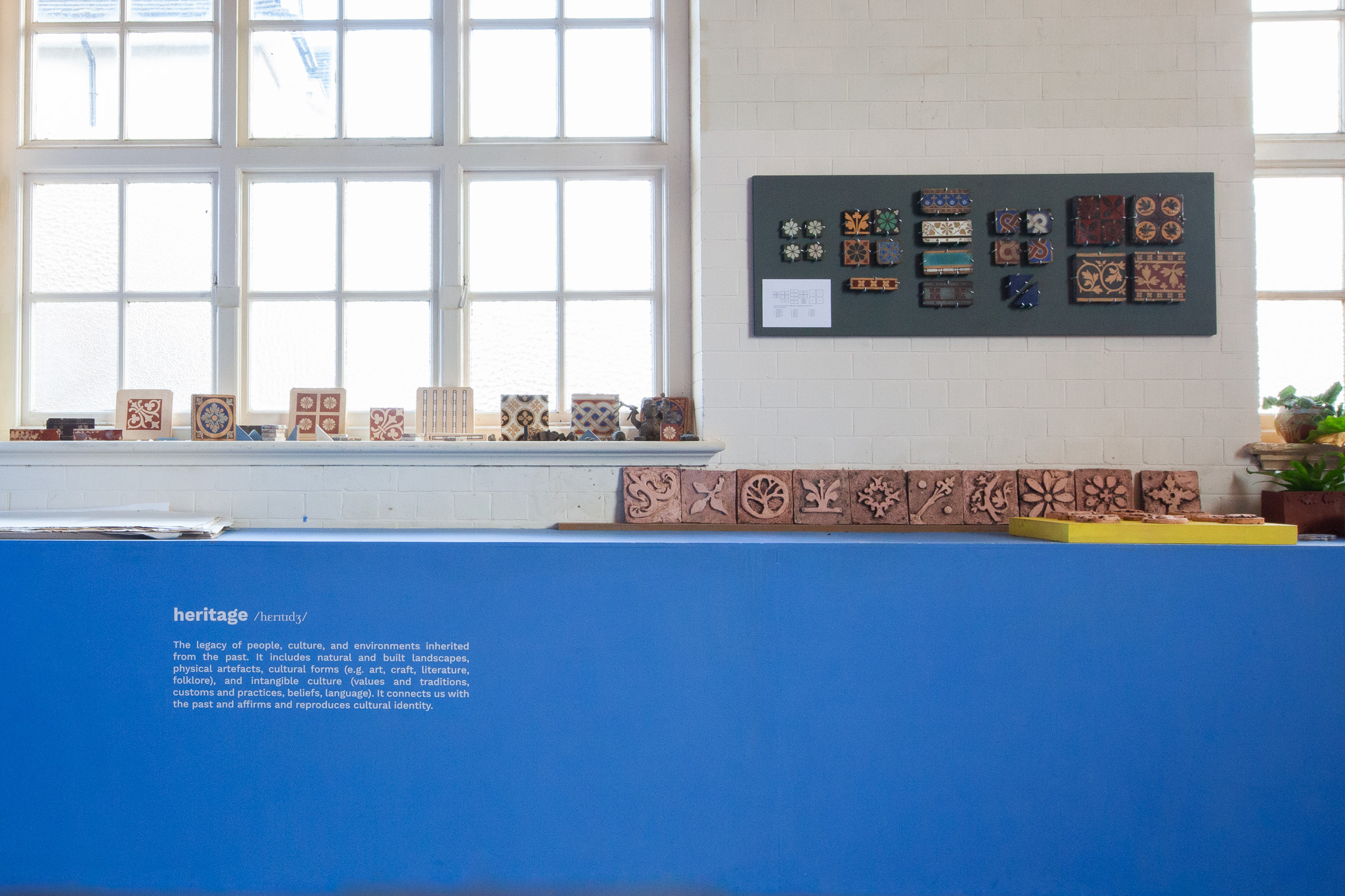






THE SUBSTRATES
The decision to explore the possibilities of reusing waste materials in the project came out of the Biennial’s partnership with High Speed Railway (HS2), who donated 3 tonnes of soil clay from the construction of a railway station in Old Oak Common, London. This focused our attention on the legal, organisational and environmental issues of waste in the context of large-scale ceramics projects, especially ones with a participatory element. Thinking about the lifespan and impact of the work produced in the space beyond the festival period brought the team to consider clay’s potential as a growing medium rather than ceramic object-making. Through a partnership with Staffordshire University, a site on the campus was chosen as a destination for the Project Space tiles to become a wildflower meadow.
To become a functional growing substrate, the spoil clay was combined other waste materials - SAWDUST, HAY, STRAW, COMPOST, SAND - which came from the Biennial’s previous projects and local creatives’ studios. To match the soil acidity of a selection of plants appropriate for the local ecosystem, recipes for three substrates with different pH levels were created. White campion (Silene latifolia) was sowed in the ALKALINE substrate, musk mallow (Malva moschata) and cowslip (Primula vulgars) in the NEUTRAL substrate and oxeye daisy (Leucanthemum vulgare) and cornflower (Centaurea cyanus) in the ACIDIC substrate.
A colour-code for the substrates was created based loosely on the pH scale and the traditional colours of encaustic and geometric tiles of Stoke-on-Trent, providing a visual link between the two main subjects in the space. Local RED clay was used for the acidic mix, while neutral GREEN and alkaline BLUE were made out of waste bone china, the primary material in the Stoke-on-Trent ceramics industry, and organic pigments. A high bone ash content of bone china, which increases the translucency of the ceramics made with it, was in this case used as an additional fertiliser in the tiles.
The decision to explore the possibilities of reusing waste materials in the project came out of the Biennial’s partnership with High Speed Railway (HS2), who donated 3 tonnes of soil clay from the construction of a railway station in Old Oak Common, London. This focused our attention on the legal, organisational and environmental issues of waste in the context of large-scale ceramics projects, especially ones with a participatory element. Thinking about the lifespan and impact of the work produced in the space beyond the festival period brought the team to consider clay’s potential as a growing medium rather than ceramic object-making. Through a partnership with Staffordshire University, a site on the campus was chosen as a destination for the Project Space tiles to become a wildflower meadow.
To become a functional growing substrate, the spoil clay was combined other waste materials - SAWDUST, HAY, STRAW, COMPOST, SAND - which came from the Biennial’s previous projects and local creatives’ studios. To match the soil acidity of a selection of plants appropriate for the local ecosystem, recipes for three substrates with different pH levels were created. White campion (Silene latifolia) was sowed in the ALKALINE substrate, musk mallow (Malva moschata) and cowslip (Primula vulgars) in the NEUTRAL substrate and oxeye daisy (Leucanthemum vulgare) and cornflower (Centaurea cyanus) in the ACIDIC substrate.
A colour-code for the substrates was created based loosely on the pH scale and the traditional colours of encaustic and geometric tiles of Stoke-on-Trent, providing a visual link between the two main subjects in the space. Local RED clay was used for the acidic mix, while neutral GREEN and alkaline BLUE were made out of waste bone china, the primary material in the Stoke-on-Trent ceramics industry, and organic pigments. A high bone ash content of bone china, which increases the translucency of the ceramics made with it, was in this case used as an additional fertiliser in the tiles.

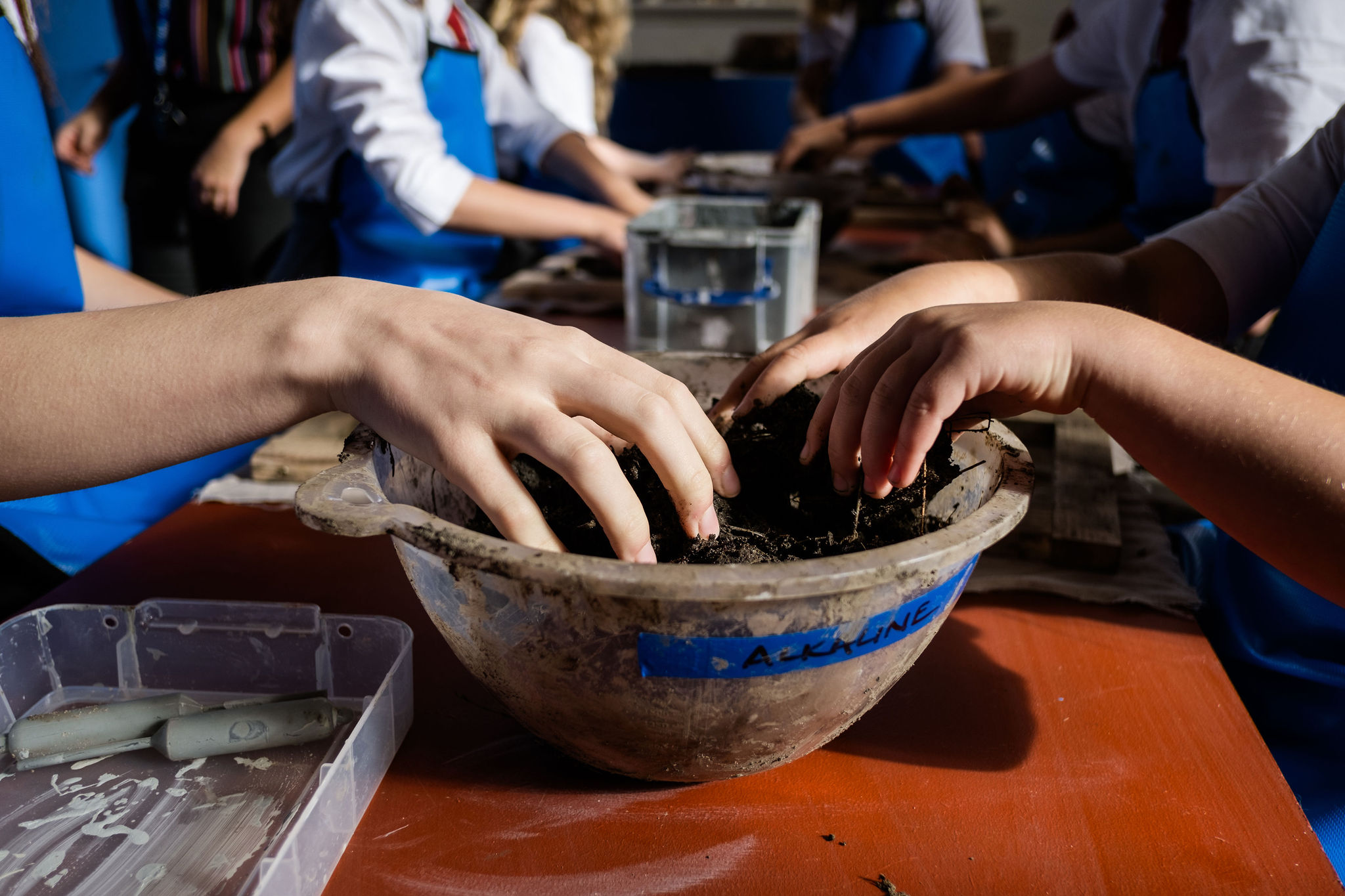



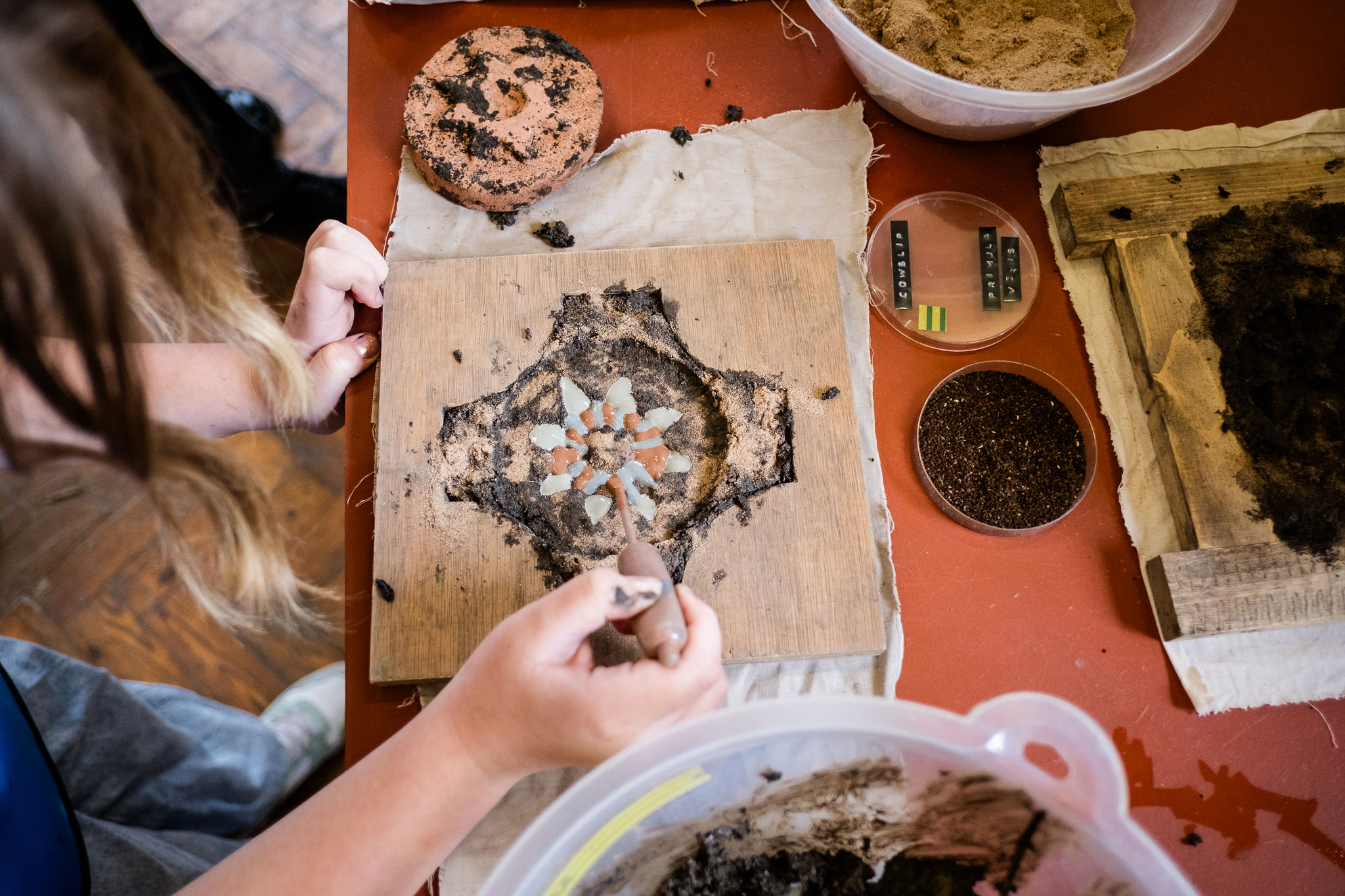

HERITAGE
The making activity in the space referenced the tile heritage of Stoke-on-Trent and specifically, the encaustic and geometric tiles of which mass production was first introduced in the city by Minton, Hollins & Co in the 1840s. Inspired by the medieval technique of inlay, where clays of contrasting colours were used to create patterns, encaustic tiles played an important role in the Gothic Revival movement and Stoke remained the most important centre of their production and export. The finest examples can be found in places like the Westminster Cathedral, the Bethesda Terrace Arcade in New York or the Capitol Building in Washington DC and simpler designs line the entrances and floors of many houses in Stoke-on-Trent and other cities in the UK. Original tiles were lent to the space from the collection of the Potteries Museum and Gallery in Stoke-on-Trent.
We were drawn to the complex craft of making these architectural ceramics but also the fact they embodied both luxury and familiarity, and represented a time when working-class housing was considered worthy of adornment. Our study of the patterns of encaustic tiles and floor arrangements informed the designs for the tile moulds and stamps used in the project space as well as the dry play table and the visitor feedback wall. In each of these areas, visitors were encouraged to create or play with individual tile-like components, which expanded their meaning as a part of a larger whole. Although the tiles made during the project were not to become ceramics, the making process also referenced the original production methods.
The making activity in the space referenced the tile heritage of Stoke-on-Trent and specifically, the encaustic and geometric tiles of which mass production was first introduced in the city by Minton, Hollins & Co in the 1840s. Inspired by the medieval technique of inlay, where clays of contrasting colours were used to create patterns, encaustic tiles played an important role in the Gothic Revival movement and Stoke remained the most important centre of their production and export. The finest examples can be found in places like the Westminster Cathedral, the Bethesda Terrace Arcade in New York or the Capitol Building in Washington DC and simpler designs line the entrances and floors of many houses in Stoke-on-Trent and other cities in the UK. Original tiles were lent to the space from the collection of the Potteries Museum and Gallery in Stoke-on-Trent.
We were drawn to the complex craft of making these architectural ceramics but also the fact they embodied both luxury and familiarity, and represented a time when working-class housing was considered worthy of adornment. Our study of the patterns of encaustic tiles and floor arrangements informed the designs for the tile moulds and stamps used in the project space as well as the dry play table and the visitor feedback wall. In each of these areas, visitors were encouraged to create or play with individual tile-like components, which expanded their meaning as a part of a larger whole. Although the tiles made during the project were not to become ceramics, the making process also referenced the original production methods.

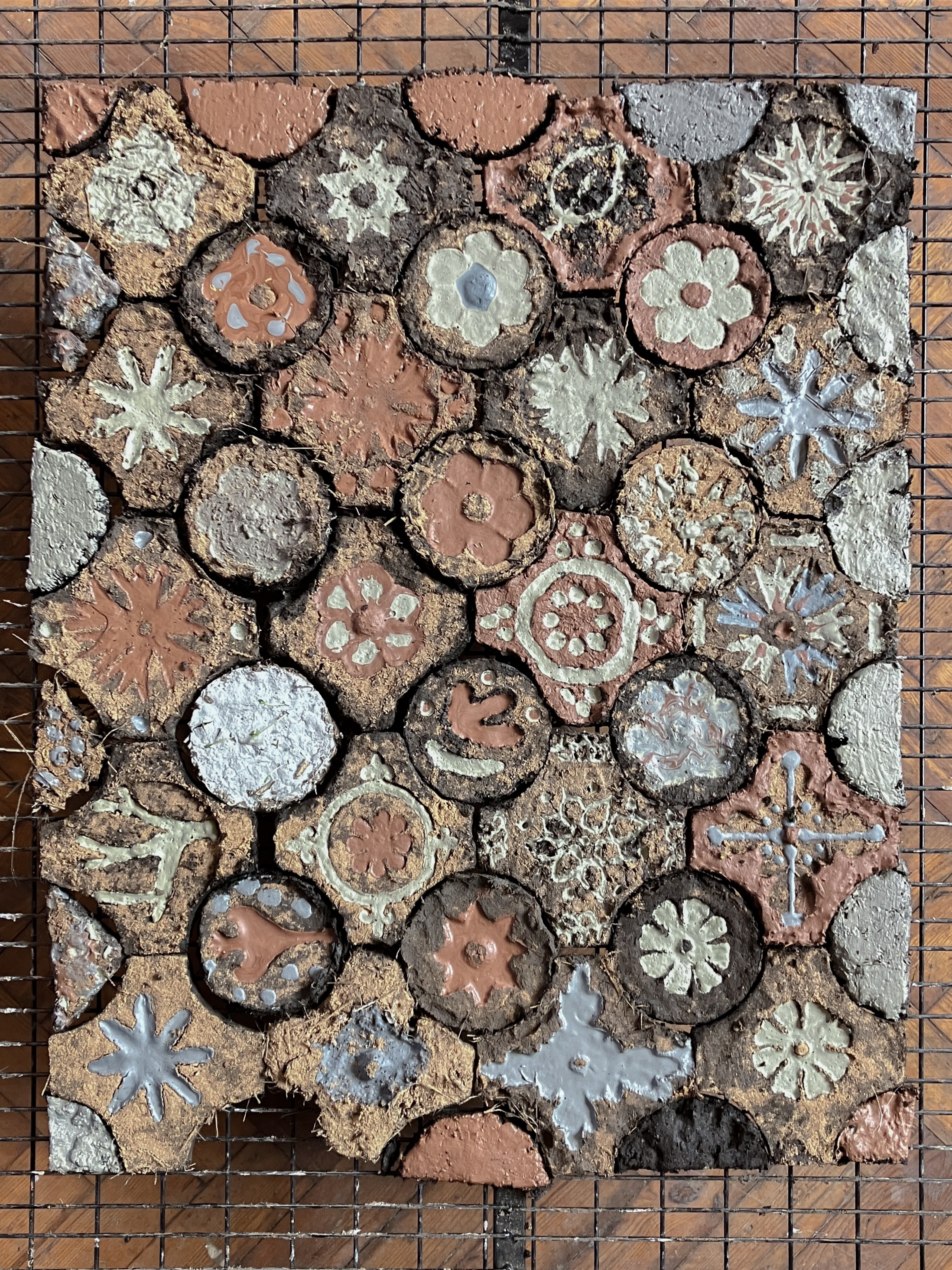



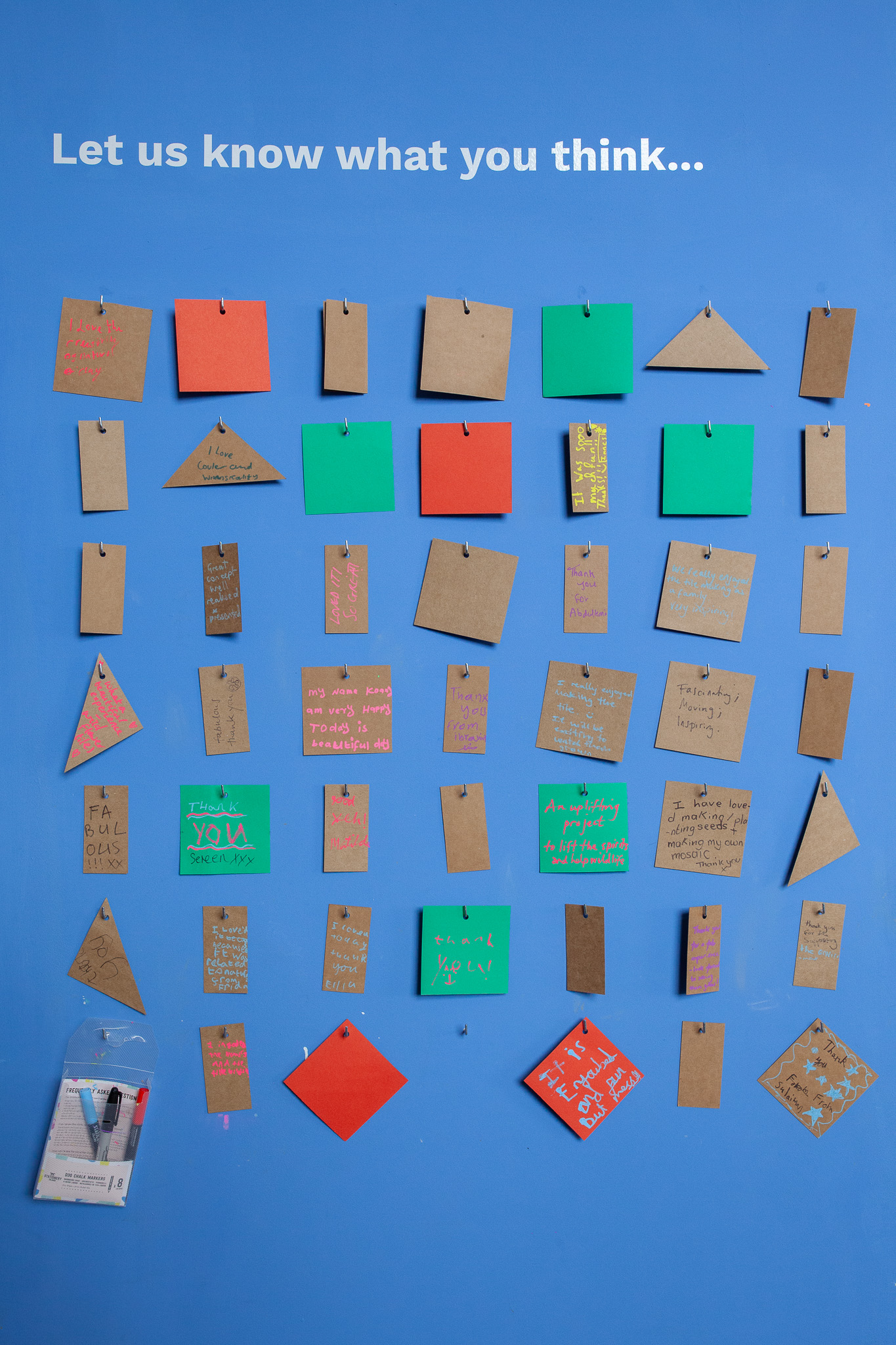


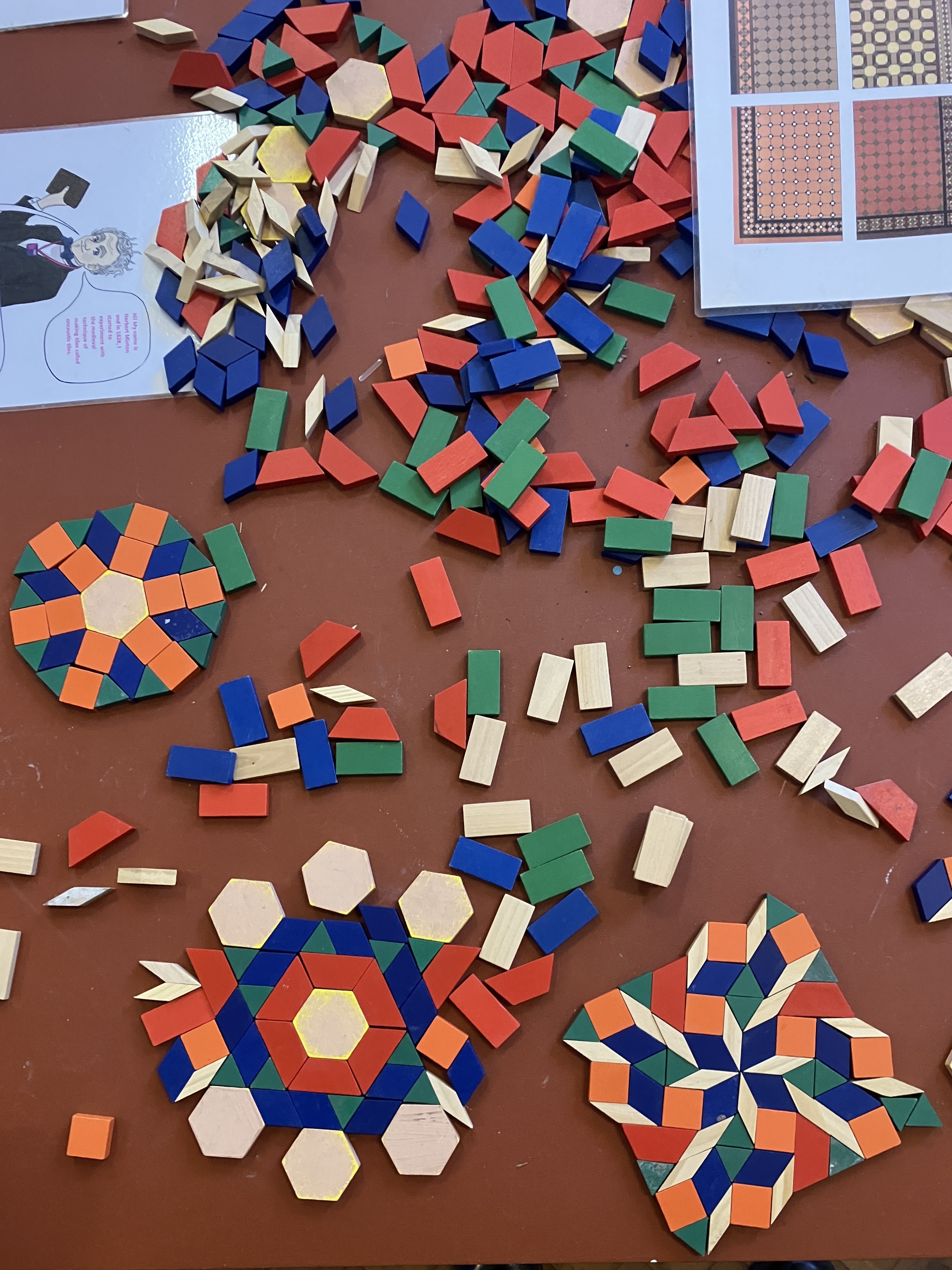
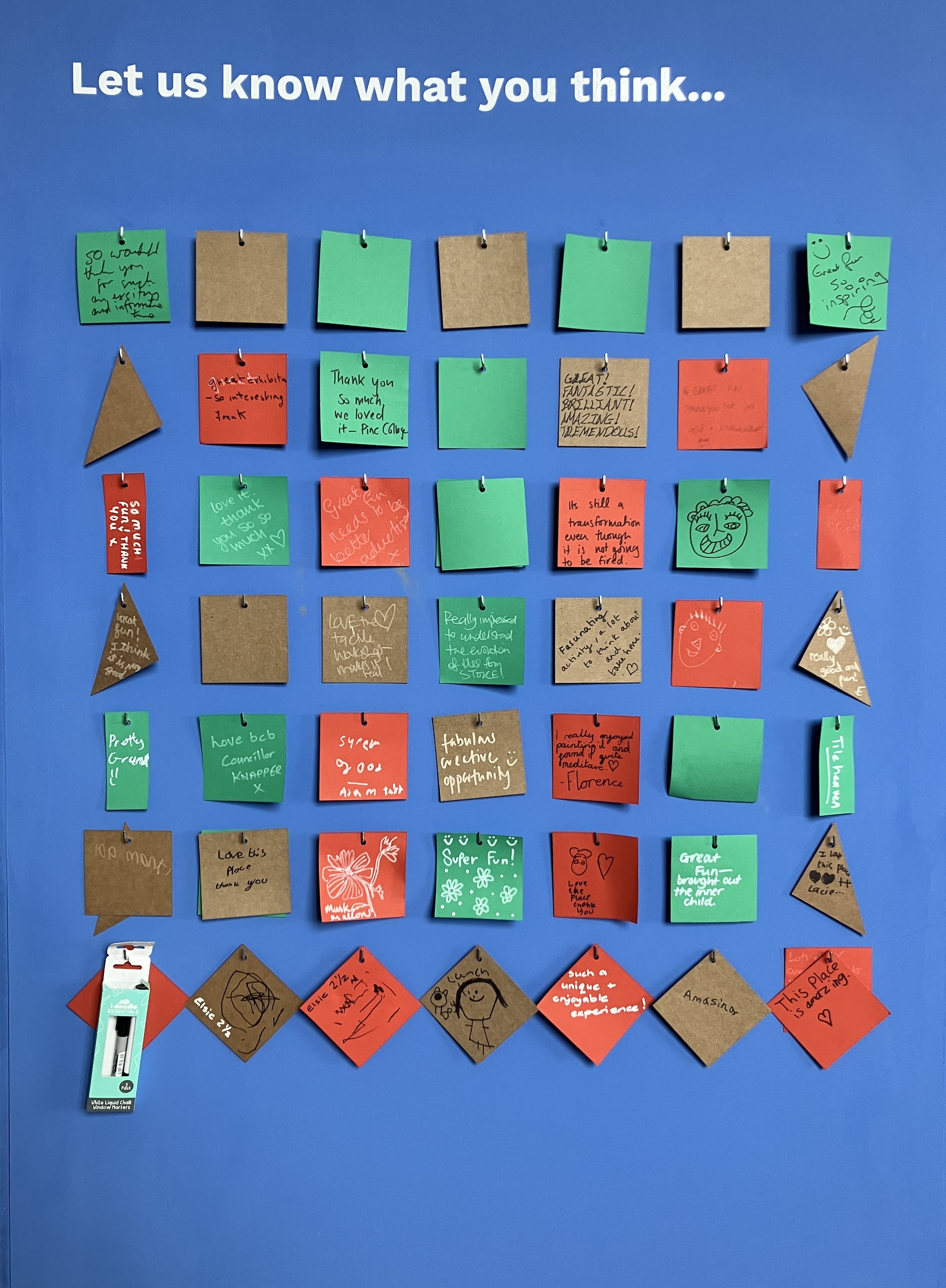




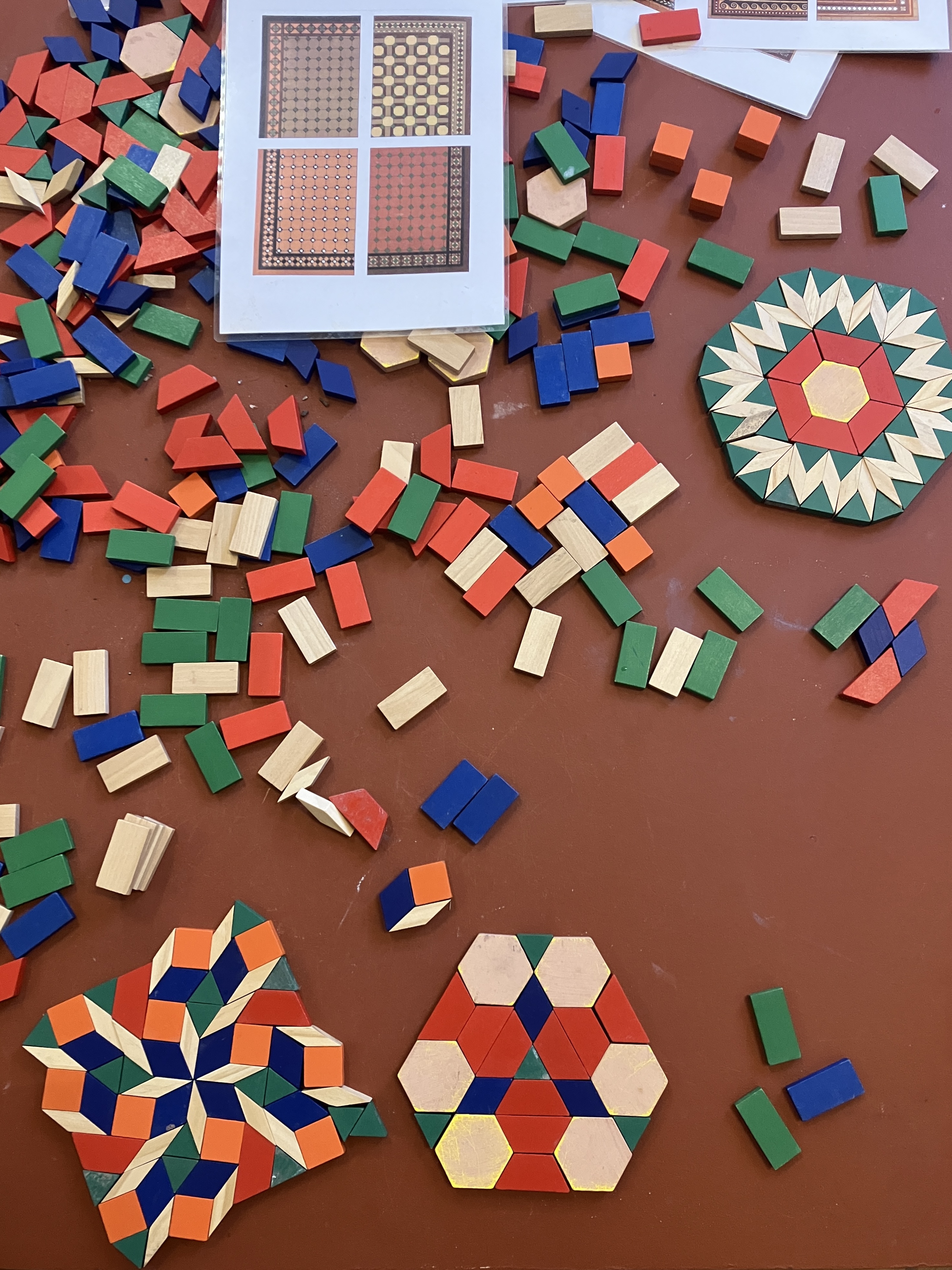
Photography by Jenny Harper and Natalia Kasprzycka